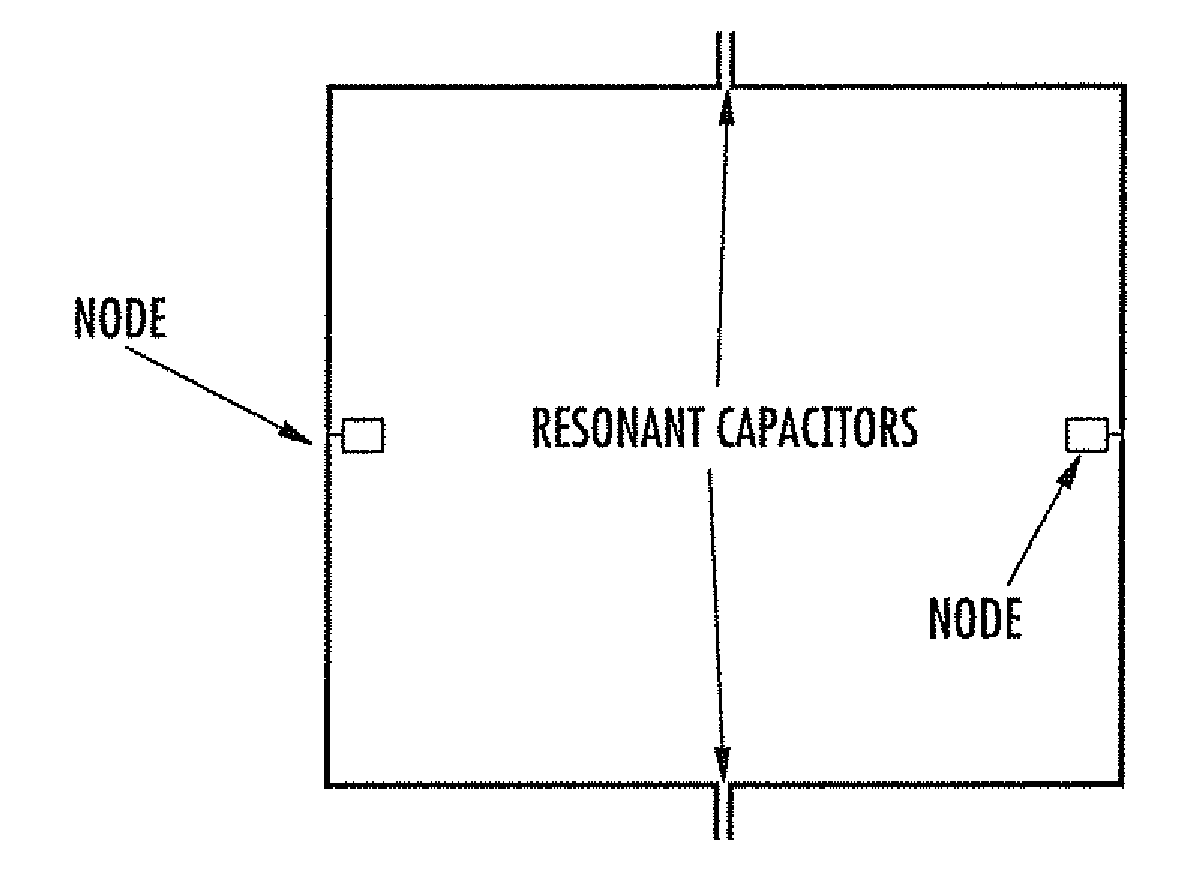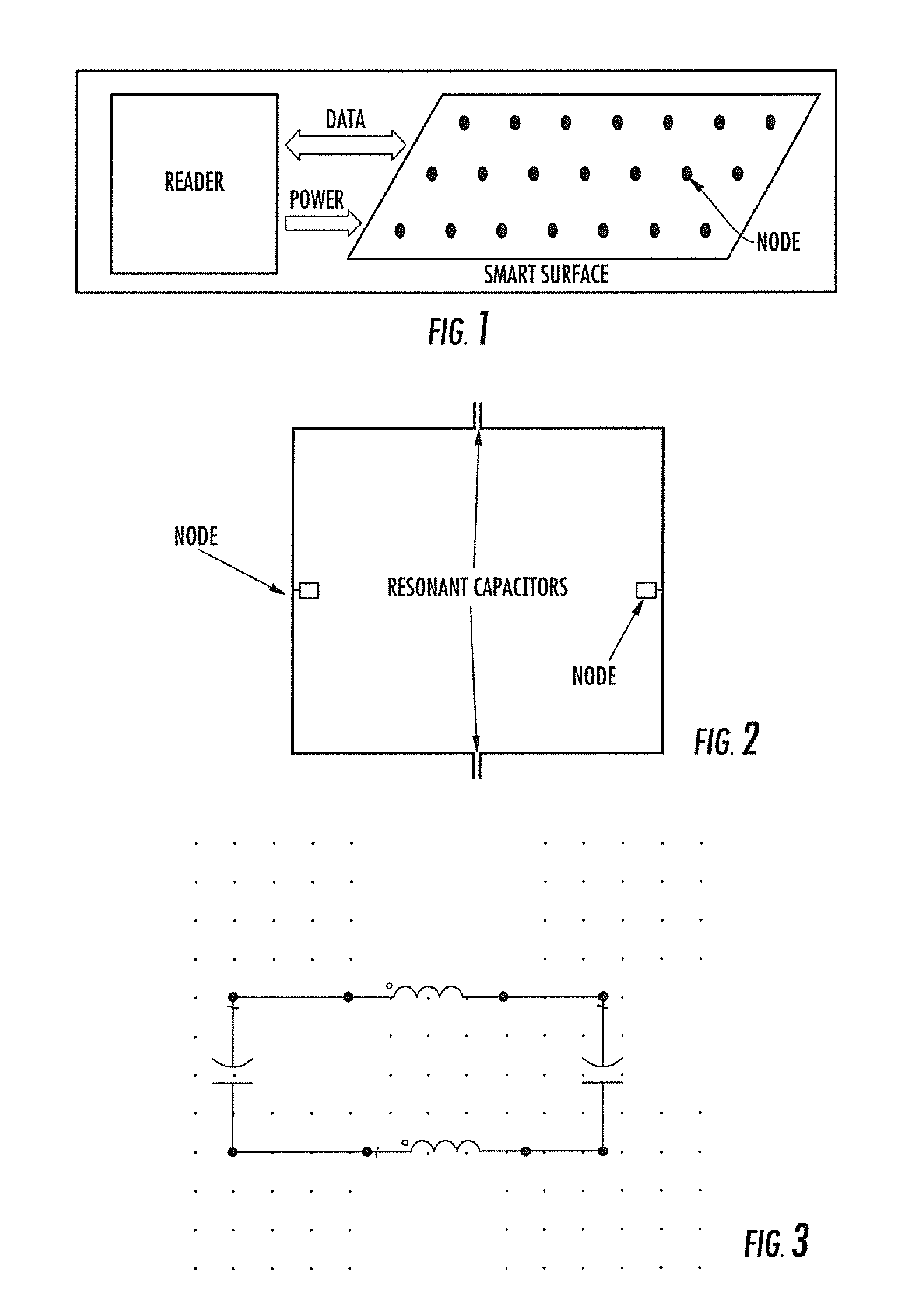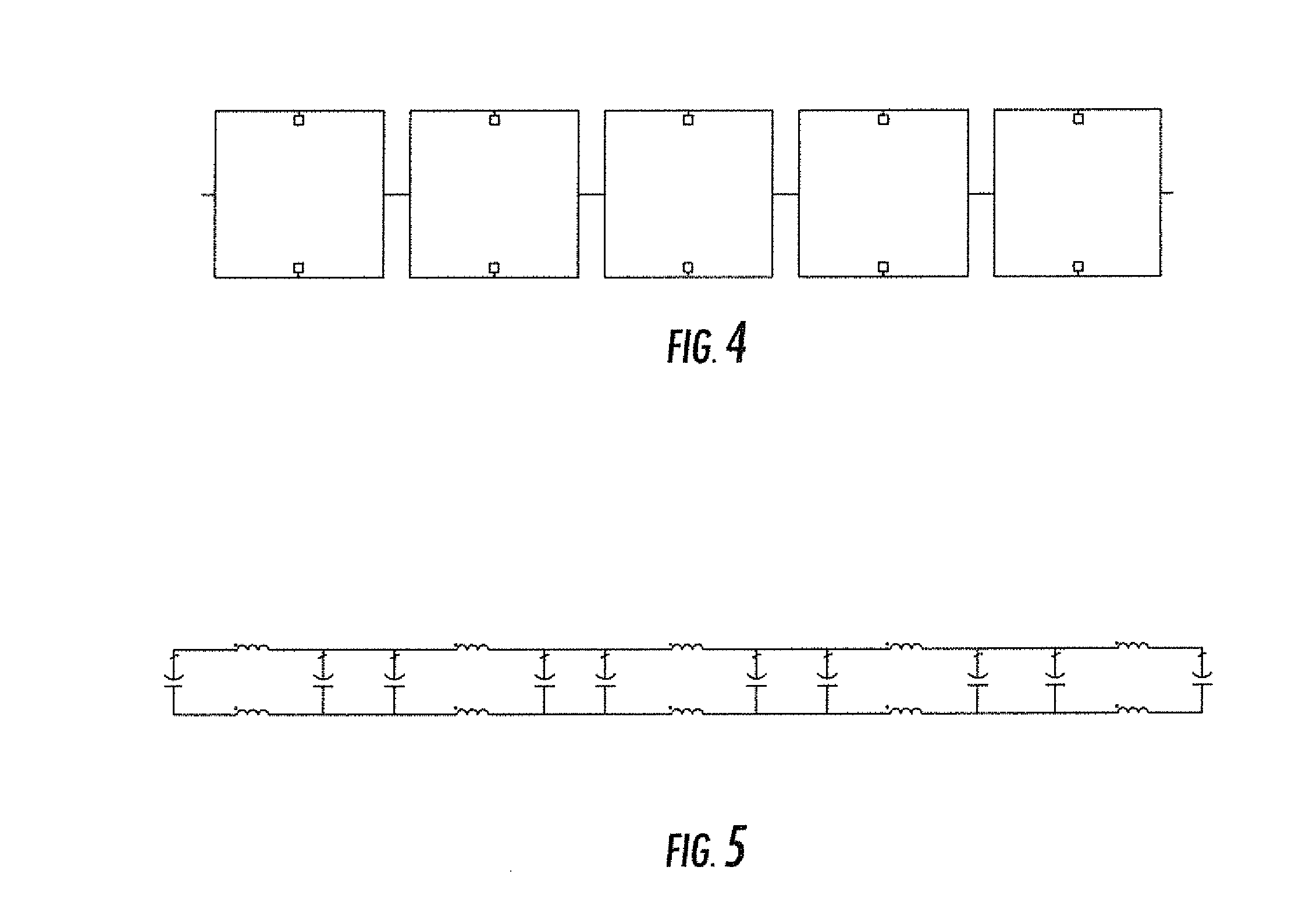RFID readable device with smart surface access
a technology of readable devices and smart surfaces, applied in the field of radio frequency identification devices (rfid) systems, can solve the problems of laborious near-field coupling of a reader with every tag device of a tablecloth array having a very large number of sensing nodes over a relatively large surface area, and achieve the effect of minimizing power loss
- Summary
- Abstract
- Description
- Claims
- Application Information
AI Technical Summary
Benefits of technology
Problems solved by technology
Method used
Image
Examples
Embodiment Construction
[0022]FIG. 1 is an exemplary scheme of a near-field and / or far-field RF accessible multi-node surface monitoring device. The array has a plurality of sensing nodes that may be uniformly spaced as depicted, or may have any kind of distribution over the surface according to the monitoring needs. The reader device is typically a remote unit that may be fixed or mobile.
[0023]FIGS. 2 and 3 are a basic layout and the equivalent circuit, respectively, of a RF coupling structure between two adjacent nodes of a multi-node surface monitoring device. The RF coupling structure may, for example, be realized in any of the forms extensively described in great detail in patent application no. US2009 / 0033467, which is assigned to the assignee of the present invention and the entire contents of which are incorporated by reference. Of course, other specifically developed more effective near-field and far-field RF coupling structures may be used to implement a bi-dimensional smart surface coupling netw...
PUM
 Login to View More
Login to View More Abstract
Description
Claims
Application Information
 Login to View More
Login to View More - R&D
- Intellectual Property
- Life Sciences
- Materials
- Tech Scout
- Unparalleled Data Quality
- Higher Quality Content
- 60% Fewer Hallucinations
Browse by: Latest US Patents, China's latest patents, Technical Efficacy Thesaurus, Application Domain, Technology Topic, Popular Technical Reports.
© 2025 PatSnap. All rights reserved.Legal|Privacy policy|Modern Slavery Act Transparency Statement|Sitemap|About US| Contact US: help@patsnap.com



